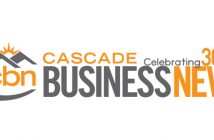 We took sad note of our daily newspaper’s challenges with its bank and impact the recession has had on its revenues. The Bulletin reported last week that it had to file a Chapter 11 bankruptcy in order to get its financial house in order.
We took sad note of our daily newspaper’s challenges with its bank and impact the recession has had on its revenues. The Bulletin reported last week that it had to file a Chapter 11 bankruptcy in order to get its financial house in order.
Note: the Bulletin’s bank in question is Bank of America, which recently received a $5 billion investment from Warren Buffet to bolster the bank’s numerous losses. However, don’t think this was just a charitable donation; the deal guarantees Buffet $300 million a year in dividends and offers a chance for huge returns if the stock climbs. At one point on Thursday the shares climbed 25.8 percent. By the close those gains were trimmed back to 9.4 percent, but Buffet was still sitting on a paper profit of nearly $3 billion according to the Economic Times.
Meanwhile in Central Oregon there’s nary a business that hasn’t been impacted by this challenging economy. Those who have survived have cut expenses, laid off employees and worked harder just to break even. Those who have endured the recession, in fact, have found new ways to operate their companies with a renewed strength of efficiencies.
But just when we think we can breathe a little, Congress plays politics with our future, the U.S. credit rating is downgraded, the stock market swoons and consumers tighten their belts even more, making the future nearly unpredictable. We’re now hovering around a fear of a double dip recession. We look to economists to tell us there’s hope amidst the gloom especially as we begin the final days of 2011.
According to Zachary Roth of The Lookout, although a double-dip is certainly possible, a long period of stagnation is most likely. An Associated Press survey of economists released recently put the likelihood of a recession–that is, another two or more straight quarters of economic contraction–before August 2012 at only 26 percent. But the respondents also expected the economy to inch along at just 2.1 percent growth for the rest of the year, and barely do better in 2012.
Roth also reported that the Federal Reserve appears to take a similar view. Announcing earlier this month that it would hold interest rates near zero for at least another two years, the central bank said it “now expects a somewhat slower pace of recovery over coming quarters” than it had previously–a prediction that’s consistent with a lengthy period of weak growth.
Mark Pinkowski, senior vice president, regional sales manager of Wells Fargo Commercial Banking says most of the hard data he received recently, including reports on industrial production, existing home sales, housing starts and the leading economic indicators, remain consistent with a slowly growing economy. The data, however, mostly reflect activity covering the period from the middle of June to the middle of July, which predates recent renewed recession concerns.
The soft data tell a decidedly different story, with manufacturing surveys from the Federal Reserve Banks of New York and Philadelphia showing considerable weakness for early August.
Pinkowski gives this outlook: We are now projecting an even slower pace of economic growth over the next 18 months, with significant downside risks. Without policy intervention, growth will be so slow that there will be little margin for error.
Okay so we get it, expect slow growth. What do we do about it? One of our favorite economists, Bill Conerly, Ph.D., principal of Conerly Consulting LLC and chief economist of abcInvesting.com, recently listed reasons for optimism on his blog (www.conerlyconsulting.com).
“We finally have the money supply growing as it should. The Federal Reserve’s second round of big quantitative easing (QE2 it’s called) didn’t seem to have much effect at first. The Fed increased the banking system’s reserves, but they ended up as excess reserves held by banks. However, I held that if the Fed keeps at it long enough, the reserves would get translated into money supply. Now that has happened.
“This money supply growth was accompanied by loan growth, believe it or not. Commercial and industrial loans by banks began growing at a strong pace in March and growth continues today. Consumer lending turned up in April and has risen without fail every month since. Real estate lending is still declining, but not as fast as it previously declined. Roll these categories up with the others (ag, miscellaneous) and we have four months of total bank loan growth, with a surge in July.
“The increase in the money supply and in bank lending bode very well for the economy. How long until the money supply increase pushes the economy upward? Right now I believe the time lag will be shorter, more like six to nine months. That’s grounds for some optimism in fourth quarter 2011, with even more optimism for the first half of 2012.”
That’s what we need to hear more of. No double-dip recession. Even cautious optimism might instill some stability to the economy. pha
What Can We Do During This Gloomy Economy (from Fast Upfront Small Business Blog)
With a little discipline, good organization, and planning, small businesses can safely survive an economic downturn. Here are a few suggestions:
1. Stay in touch with your cash flow. Focus on the areas where your cash is being held up, such as inventory, equipment purchases, and accounts receivable. By doing so, you will be in a position to improve your current cash flow and predict a future shortfall.
2. Consolidate or restructure your debts. Bring together debt from loans, credit cards, or any other lines of credit. Negotiate with creditors for a longer repayment period.
3. Look for ways to cut costs. You could, for example, cut down on old and obsolete inventory, and save on paper and postage through the direct deposit of payroll.
4. Streamline your billing system. You need to be on top of your customer receivables. There are several accounting software programs on the market, such as QuickBooks, that can help you keep track of who has paid and automatically alert you when bills are overdue.
5. Tighten your credit policy. Set stricter terms and conditions for receiving credit. You could require a down payment at purchase, shorten the payment period, and only extend credit to select customers.
6. Use assertive debt collection techniques. Know when to make phone calls, send written requests for payment, and statements, and know when it is time to hand it over to a collection agency.
7. Put off any plans for expansion. It is better to stick to what you are already good at and just try to make it better.
8. Outsource certain jobs or tasks. Business owners can take advantage of a growing pool of professional freelance workers for any job or project that will take away from the business. This is a cheaper option to hiring employees, and you can get some quality work.
9. Focus on customer satisfaction. Work on retaining the customer base that you have built up with follow-through, good customer service, and quality control.
10. Know your financing options. Know where to get money before you need it. Some financing options are based on future sales and have flexible repayments, such as invoice factoring or merchant/ business cash advances.
Focus on building relationships with current lenders, and do not forget about any family or friends who may be able to help you out in a pinch.




